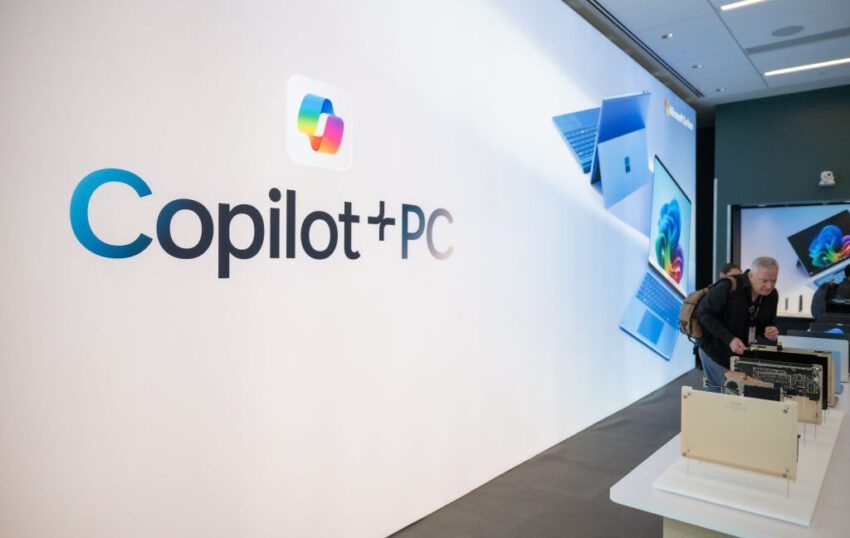
critics scoff after microsoft warns ai feature Microsoft’s recent warning about an experimental AI feature integrated into Windows has ignited a wave of skepticism among security experts and critics.
critics scoff after microsoft warns ai feature
Introduction to Copilot Actions
On Tuesday, Microsoft unveiled Copilot Actions, a suite of “experimental agentic features” designed to enhance user productivity. These features allow the AI to perform a variety of tasks, such as organizing files, scheduling meetings, and sending emails. The company positions Copilot Actions as an “active digital collaborator” that can carry out complex tasks to improve efficiency and productivity for users. However, the introduction of these features has not been without controversy.
Security Concerns Raised
In a notable warning, Microsoft cautioned users to enable Copilot Actions only if they fully understand the associated security implications. This advisory has raised eyebrows among security-minded critics who question why large technology companies like Microsoft are so eager to roll out new features without fully understanding their potential risks. The warning suggests that the AI could potentially infect devices and pilfer sensitive user data, a concern that resonates deeply in an era where data breaches and cyber threats are rampant.
Understanding the Risks
The risks associated with AI features like Copilot Actions can be categorized into several key areas:
- Data Privacy: The AI’s ability to access and manipulate sensitive information raises questions about user privacy. If the AI can access emails and files, what safeguards are in place to protect that data from unauthorized access?
- Malicious Use: The potential for the AI to be exploited by malicious actors is a significant concern. If hackers can manipulate the AI, they could use it to execute harmful actions without the user’s knowledge.
- Hallucinations: AI systems, including those developed by Microsoft, are known to produce “hallucinations,” or false outputs that can mislead users. This could result in erroneous actions being taken based on incorrect information.
- Prompt Injection Attacks: These attacks involve manipulating the AI’s input to produce unintended outputs. If an attacker can influence the prompts given to the AI, they could potentially direct it to perform harmful tasks.
Critics’ Reactions
The response from the tech community has been swift and critical. Security experts have expressed their concerns regarding the implications of deploying such powerful AI features without adequate safeguards. Many argue that the rush to innovate often overlooks essential security considerations, putting users at risk.
Historical Context
This situation is not unprecedented. In recent years, several tech giants have faced backlash for prioritizing rapid feature deployment over user safety. For instance, the introduction of various social media algorithms has led to significant privacy breaches and data misuse. Critics argue that the tech industry has a responsibility to ensure that new technologies are safe and secure before they are made widely available.
Microsoft’s Track Record
Microsoft has a complex history when it comes to security. The company has made significant strides in improving its security protocols and has invested heavily in cybersecurity measures. However, past incidents, such as the infamous WannaCry ransomware attack in 2017, have left a lasting impression on the public’s perception of the company’s commitment to user safety. This history adds weight to the concerns raised about the Copilot Actions feature.
Implications for Users
The implications of enabling Copilot Actions extend beyond individual users to organizations and businesses that rely on Microsoft products. As companies increasingly adopt AI-driven tools, the potential for data breaches and security incidents grows. Organizations must weigh the benefits of increased productivity against the risks associated with deploying experimental AI features.
Best Practices for Users
For users considering enabling Copilot Actions, it is crucial to adopt best practices to mitigate potential risks:
- Understand the Features: Before enabling any new feature, users should thoroughly understand what it does and how it operates. Familiarizing oneself with the security implications is essential.
- Limit Access: Users should consider restricting the AI’s access to sensitive information. Limiting the data the AI can interact with can reduce the risk of data breaches.
- Stay Informed: Keeping abreast of updates from Microsoft regarding Copilot Actions and other AI features is vital. This includes understanding any new security measures or vulnerabilities that may arise.
- Utilize Security Tools: Employing additional security tools, such as antivirus software and firewalls, can provide an extra layer of protection against potential threats.
The Broader AI Landscape
The concerns surrounding Copilot Actions are part of a larger conversation about the role of AI in society. As AI technologies become more integrated into everyday life, the potential for misuse and unintended consequences grows. The tech industry must grapple with the ethical implications of deploying AI systems that can significantly impact users’ lives.
Regulatory Considerations
As the debate over AI safety continues, regulatory bodies are beginning to take notice. Governments around the world are exploring frameworks to govern the development and deployment of AI technologies. These regulations aim to ensure that companies prioritize user safety and data protection in their innovations. The outcome of these discussions could shape the future of AI development and influence how companies like Microsoft approach new features.
Conclusion
The introduction of Copilot Actions by Microsoft has sparked a necessary dialogue about the balance between innovation and security. While the potential benefits of AI-driven productivity tools are significant, the associated risks cannot be overlooked. As users and organizations navigate this evolving landscape, it is crucial to prioritize safety and remain vigilant against potential threats. The tech industry must take responsibility for ensuring that new features are secure and reliable before they are unleashed on the public.
Source: Original report
Was this helpful?
Last Modified: November 20, 2025 at 5:35 am
2 views














